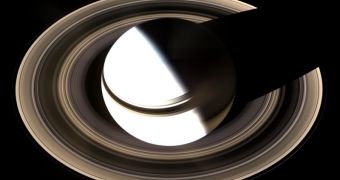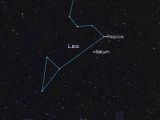Although it is not the biggest planet in the solar system, it is certainly one of the most spectacular: truly a miniature solar system, with more than 63 moons orbiting around it and a beautiful ring of debris hovering above its equator. A unique feature, even though Uranus also has a dim ring around it. As of 24 of February, Saturn will be in an ideal position on the night sky for ground observation.
It is currently in the Leo constellation, marking the head and mane, meaning it is in the opposite direction to the Sun. Although easily visible with the naked eye on the night sky, as a bright yellow-white star-like object, most of you will never be able to accurately pinpoint Saturn, thus it is a unique opportunity to go outside and find the planet on your own.
Nonetheless, a few professional instruments are welcomed as it can get a little boring to watch only a point-like spot of light on the night sky. A small telescope could greatly enhance the image of the planet and its icy ring of matter cycling around it. Any telescope with a magnification of 30 or more will do just fine for amateur astronomers.
And to make things even more interesting, in addition to the excellent position on the sky, Saturn is also tilted, in relation to our planet, at an angle of about 8 degrees, which will increase with the arrival of the month of May, meaning that the rings will be clearly visible even though they may appear as a line crossing the equator of the planet. While moving on its orbit, Saturn will start to decrease its tilt in relation to Earth until the middle of next year when the angle will render the rings around it invisible.
Saturn is the second largest planet in the solar system after Jupiter, it is a gas giant orbiting the Sun at a distance twice as large as that of Jupiter's orbiting radius, totaling an average of 1,417 million kilometers. This means that it is able to complete an orbit around the Sun once every 29.5 years. It is mostly composed of a mix of multiple gases and a diameter about nine time larger than that of the Earth.
The rings around Saturn were discovered in 1610 by the famous astronomer Galileo Galilei, with the help of a rudimentary telescope built by himself. The discovery he made nearly four centuries ago took Galileo by surprise as his telescope was only able to make an image picturing a planetary disk flanked by two smaller bodies. He simply could not make sense of the objects he was seeing, and did not realize what they actually were. Only in 1655 astronomers were finally capable of understanding the nature of the two bodies flanking the planet's disk, with the improvements brought to the telescope design by Christiaan Huygens.
Although in most photographs Saturn's rings may appear as a continuous body, the fact is they are composed of billions of microscopic water ice particles, dust and bodies as large as an average house.

 14 DAY TRIAL //
14 DAY TRIAL // 
